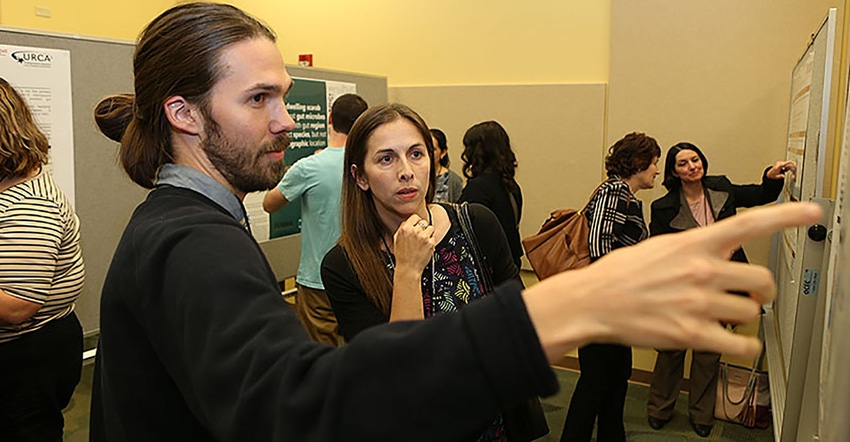March 19, 2021

A group of Purdue University scientists have authored a review of agricultural microbiome research that combines knowledge about plant, soil and insect microbiome work to develop an integrated portrait of the complex interactions that will come into play as scientists attempt to harness microbes to improve crops. The work was published in the journal Nature Plants.
“We wanted to gather what we know about the microbiome in an agricultural context and see if that knowledge can be translated into actionable information for farmers.,” said Lizzie French, a postdoctoral researcher in entomology and lead author of the paper. “Using emerging technologies in next-generation sequencing and digital agriculture, we are beginning to integrate microbial community interactions into our understanding of agriculture as a whole ecosystem, which will enable growers to work with nature to farm more sustainably."
Many decisions that have affected agriculture were made without knowledge of microbiomes or how those microbe populations would be affected. Crops bred for improved yield have lost genes that help the plants interact beneficially with microbes; pesticides can alter the abundance of beneficial insects and the microbes they carry; and monoculture or limited crop rotations can alter microbial diversity.
Other practices have improved the abundance and diversity of microbe populations, including better crop rotations and cover cropping. Biotechnology companies have developed products that can add beneficial microbes to an agricultural ecosystem, reducing the need for fertilizers and pesticides. However, more work is needed to make these products viable alternatives to traditional agricultural inputs.
“Efforts focused on improving plant growth and yields have caused us to either lose microbial species or the ability of plants to interact with some beneficial microbes,” said Laramy Enders, an assistant professor of entomology and corresponding author of the paper. “We’ve started to learn more about the interconnected nature of these microbial communities, and as we look at this from a holistic point of view, we can see opportunities to improve crops in new ways.”
The authors say these advances are first steps to developing tools that will improve the ability to customize and shape microbiomes to boost plant defenses and yields in specific crops and in specific locations
“We ultimately envision a decision-tree framework that will enable growers to make data-driven management decisions on the appropriate practices, cultivars and microbial inoculants to optimize the health of their crop and soil for their specific region and farming system,” they write in the Nature Plants paper. “These are exciting times for harmonizing efforts that harness the power and complexity of all interacting sectors of crop microbiomes to fuel a future of sustainable and healthy agroecosystems.”
Source: Purdue University, which is solely responsible for the information provided and is wholly owned by the source. Informa Business Media and all its subsidiaries are not responsible for any of the content contained in this information asset.
Read more about:
ResearchYou May Also Like




